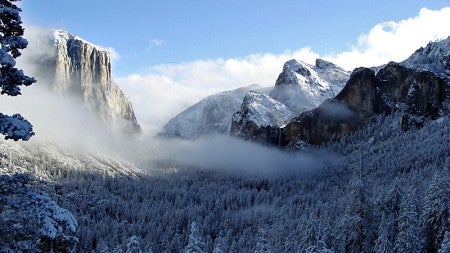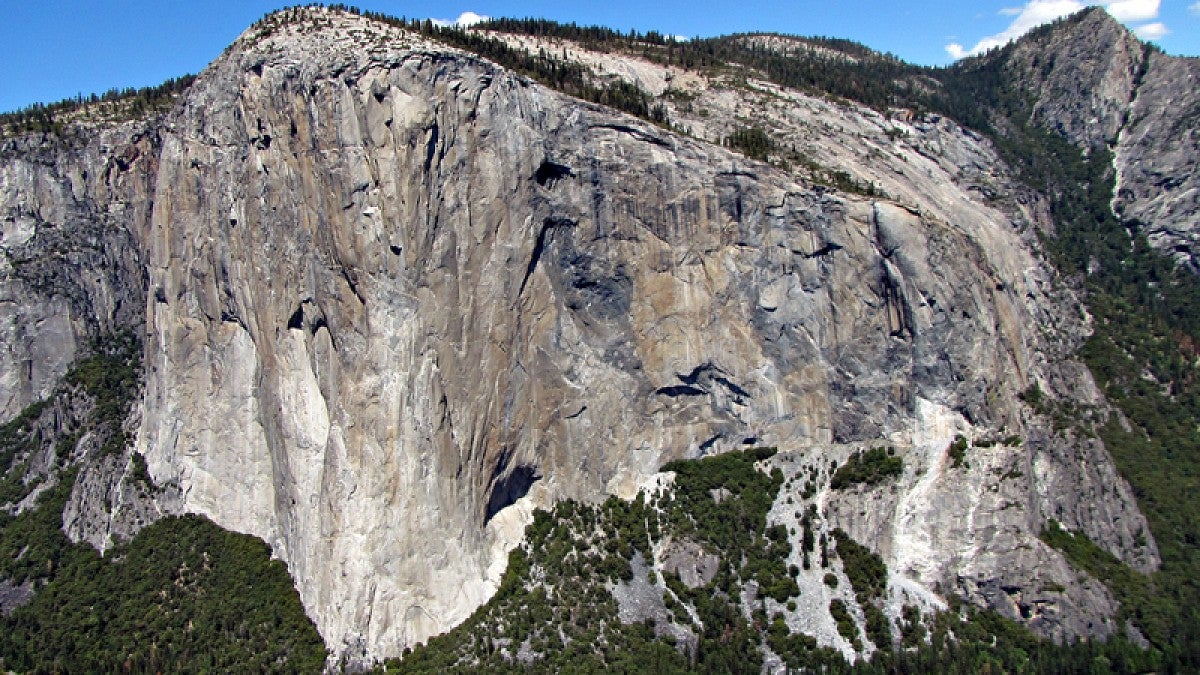To mountaineer Alex Honnold, El Capitan was something to be climbed without safety gear last month.
To UO geologist Leif Karlstrom, the giant, rocky landmark at California’s Yosemite National Park is like an airliner’s black box, filled with data about magma trapped in the Earth’s crust.
“You have magma that is generated deep in the earth and somehow it gets to the surface carrying heat and volatiles, such as carbon dioxide. How that happens is through the crustal magma transport system,” said Karlstrom, a professor in the Department of Earth Sciences and a member of the UO’s volcanology cluster.

In a new paper, Karlstrom and colleagues suggest that structures such as El Capitan contain the historical record — dating to tens to hundreds of millions of years ago — of magma that doesn’t explode as Mount St. Helens did in 1980.
Such structures are called magmatic intrusions. They form and grow gradually from small pulses of magma that cool and crystalize some 3 to 12 miles underground. Those seen today have been uplifted and exposed by erosion.
The research, which was supported by three National Science Foundation grants, was published online July 10 by the journal Nature Geoscience. It provides a new framework for understanding the structure of magma plumbing systems.
“Granitic landscapes in the Yosemite Valley in California and in the North Cascades are iconic, huge cliffs with exposed rock,” Karlstrom said. “If you look closer, the structure of that landscape shows all kinds of intrusive bodies that record different pulses of magma coming into the crust. Our findings hopefully allow you to stare up at El Capitan and make sense of it in some new way.”
For the research, Karlstrom, Scott R. Paterson of the University of Southern California and A. Mark Jellinek of the University of British Columbia examined more than a decade of measurements of size distributions of igneous rock intrusions in the North American Cordillera, the mountain chain that includes the Cascade and Sierra Nevada Mountains.
Magma rising in active volcanic regions in places such as the Cascades, Hawaii and Iceland, Karlstrom said, often occurs as narrow, sheet-like intrusions commonly called dikes and sills. This occurs as a cracking process in brittle crustal rocks.
Over long time scales involving many such intrusions, however, the process changes. These changes, Karlstrom’s team said, are part of a transition into a “reverse energy cascade,” in which injections of rising magma become trapped and lose energy.
Magma repeatedly mixes and merges with surrounding rocks as it cools and crystalizes, forming large complexes of viscous, rather than brittle, material.
“That act of dumping heat into the crust over time changes the nature of the mechanical response to injections of magma,” Karlstrom said. “The Earth’s crust is a filter for rising melts. You have magma that is generated deep in the earth, and somehow it gets to the surface carrying heat and volatiles, such as carbon dioxide. How that happens is through the crustal magma transport system.”
Studying the processes behind magma injections over long time scales, he said, helps build better understanding of volcanoes, their impacts on global climate and where large volcanoes are likely to occur.
“This paper hits on one of the primary current research problems in volcanology,” Karlstrom said. “We are able to make a strong statement about the connection of deep intrusive magmatism to the surface expression of volcanism. We think that what we found provides a framework for understanding other kinds of problems related to magmatism on Earth and other planets.”
—By Jim Barlow, University Communications


